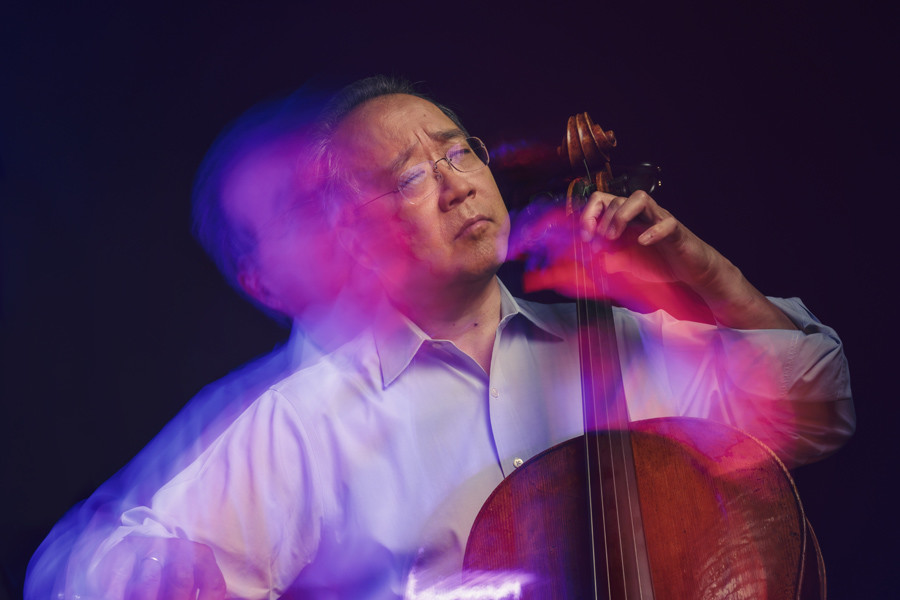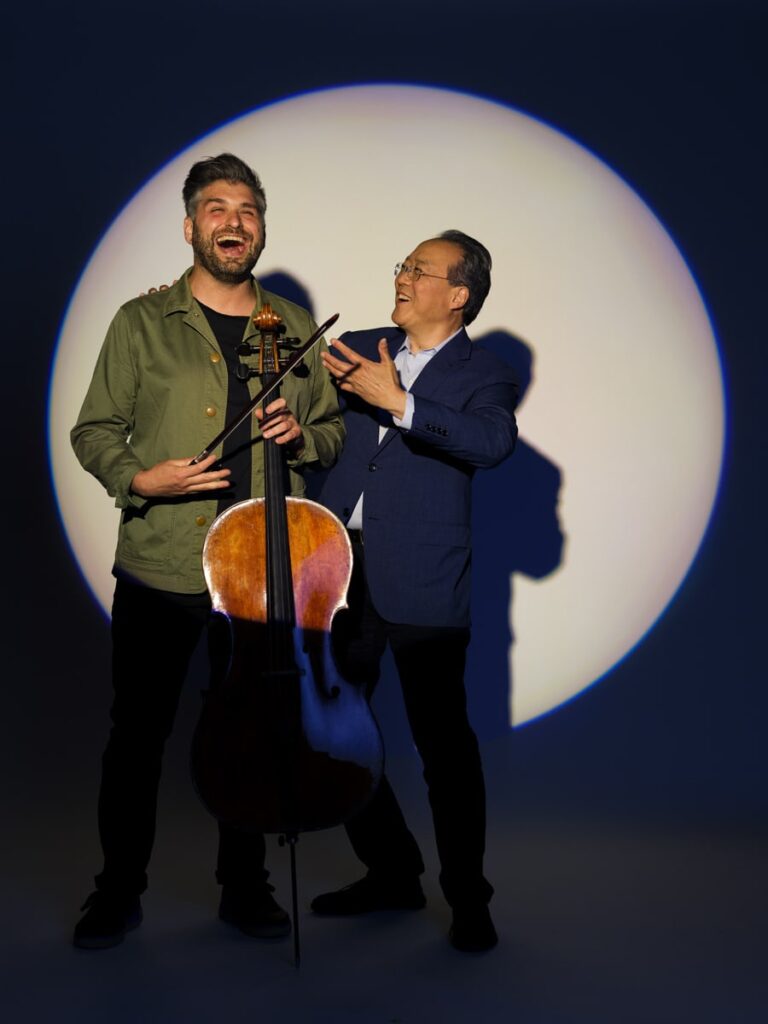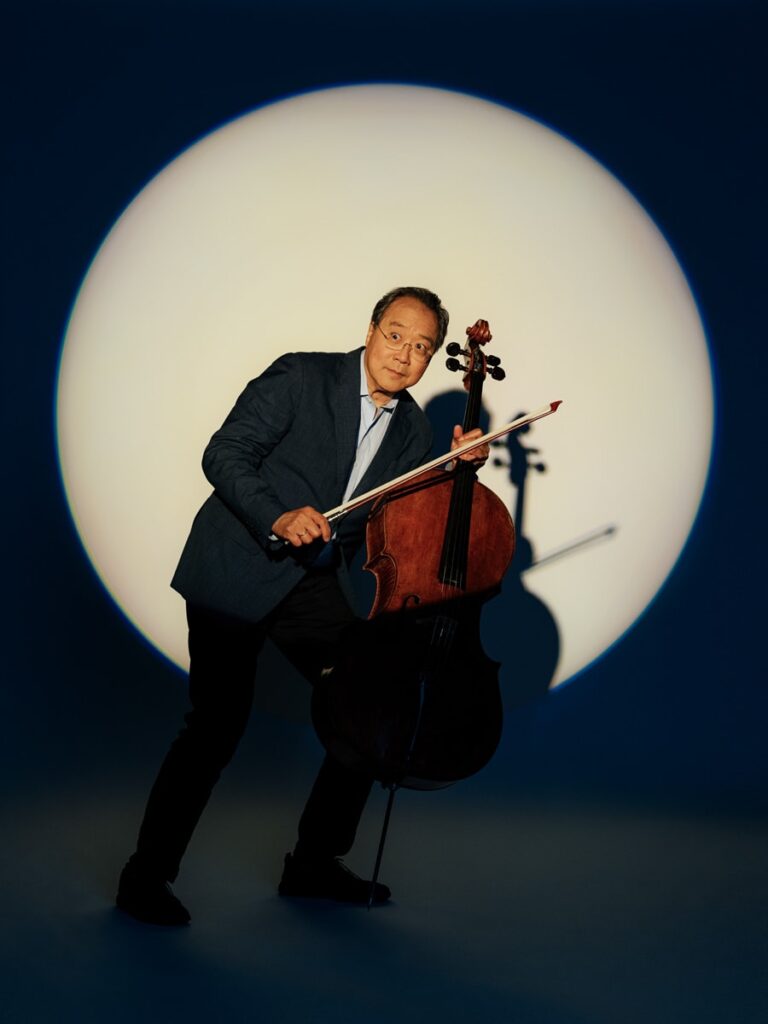Share
How Drew Gurian Captured Yo-Yo Ma for MasterClass
New York City-based portrait photographer Drew Gurian followed a textbook path to learning the ropes. While in college, he interned for Joe McNally...

New York City-based portrait photographer Drew Gurian followed a textbook path to learning the ropes. While in college, he interned for Joe McNally and Danny Clinch – two photographers known in part for their incredible photos of creatives like dancers, musicians, and the like. After college, Drew spent five years traversing the globe as McNally’s first assistant before peeling off to carve his own path.
I’ve had the pleasure of knowing Drew for much of his professional life, and have watched with fascination as he’s honed his craft while building his business. His recent work with the online education service MasterClass not only caught my eye because of the who’s who of creative talent that he’s worked with, but also because his images so marvelously capture the spirit and personality of his subjects.
I reached out to him via e-mail.

PhotoShelter: Before we talk about the incredible musician you recently photographed, let’s back up a little bit. You are represented by All in Represents. Many photographers aspire to have an agent. Can you talk about the road to finding representation and what value it brings to your business?
Drew Gurian: I can certainly speak to my own path towards finding a rep, but like most things in this industry, the path will be different for everyone. About four years ago was the first time I felt like I was in a good place to start seeking out representation. I had a bit of ad work under my belt, a handful of consistent clients, and felt as though my work was in a good enough place to at least start reaching out and having conversations.
I put together a long list of just about every rep I could find, and rated them from 1-10, along with notes as to why they’d be a good or bad fit for various reasons. I reached out to a large handful, heard back from maybe five, and had an actual conversation with two or three of them. In the midst of this, a friend introduced me to Cali (my current rep at All In Represents), who was an art buyer at the time at a large ad agency in Philadelphia.
She would occasionally host portfolio showings at her agency for photographers without reps, and I got an invite to show my work. We hit it off, and this was the start of several conversations that led to us working together. I met her during a time when she was transitioning away from her agency role, and starting up All In Represents- so a lot of this came down to meeting her at the right time since she was looking to build up her roster.
Plenty of photographers carve out amazing careers without representation, but the right rep can bring a lot of value into your business. Often times, reps have many more relationships within the industry that have been built over time. There’s an inherit trust that comes with that connection and the effort a rep puts behind it and this can be greatly beneficial for a photographer looking to get into the right ad agency.
On the business end, a rep deals with a lot of the client facing communication that I don’t generally love to do. Everything from bidding, to usage rights, to managing client expectations and billing are things that a good rep will take care of. As the photographer I’m still a part of this whole process, but a lot of that weight is lifted and it enables me to focus on the assignment.
With all of that said, just because a photographer is repped, it doesn’t mean they can sit back and wait for work. It’s a team effort. A rep is a valuable extension of a photographer’s marketing and business model and it is most successful when both the photographer and rep work together and are on the same page.
You’ve been photographing talent for MasterClass – the online celebrity learning platform – for several years. How did that gig come about?
DG: Surprisingly, a creative producer at MasterClass found my work online, and had the production team reach out to me.
What’s the typical brief like?
DG: Before any shoot, my creative director sends me a deck (pdf) with general info like the set design/color scheme and the talent’s potential wardrobe, along with some visual inspiration or concepts for the shoot. We have a call to hash it all out, and I’ll generally have a mood board ready for us to discuss and prioritize concepts.
Are there creative directors on set with you? Do you receive feedback post shoot?
DG: There are occasionally creative directors on set, but of course that has changed with COVID. On shoot days, I’m in touch with my creative team via phone/text, and send a handful of quick edits throughout the day for approval. They’re by no means final edits, but it at least lets my client know how things are coming together.
What’s your crew like? Do you work on the same days as the video production?
DG: My crew is fairly minimal on most of these shoots- usually just one assistant. On some shoots, I’ll have additional support like a second assistant and digital tech.
I’m normally shooting talent on the same days as the motion set is filming, and there’s a bit of time carved out each day for the talent to come to my set for portraits.
You’ve photographed some major talent for MasterClass including Jeff Koons, Alicia Keys, Misty Copeland, David Sedaris and more. Assuming that not everyone shows up to set excited to have their photo taken, what’s your secret for getting the most out of the subject in limited time?
DG: Preparation is key for me to get the most out of whomever I’m photographing- especially when it’s someone notable. This involves reading stories about them and watching interviews to get a sense of their personality and how best to engage with them. I find researching past photos shot of them to be really helpful as well. All of these things play into the mood board- whether that’s lighting, posing, color, mood or conceptual references.
When the talent arrives, one of the first things I do with them is go over the mood board and make sure that they’re fully on board with what we’re trying to accomplish. Proving that I’ve done some homework I think lets the talent know that they’re in good hands, and shows them that this is a collaborative effort.
I like to keep my set really well organized, and when I have multiple setups, I have my camera settings for each one taped to apple boxes around set. I’m very used to shooting multiple setups in a very short amount of time, so little things like this are crucial in making the most of it.
Having all of these things done gives me more headspace to be able to dive into conversation with the talent and hopefully connect with them in a way that produces some beautiful work that speaks to the core of who they are.
As a cellist, I’ve always had a soft spot for Yo-Yo Ma, and you recently shared an anecdote about meeting him for the first time after a director for MasterClass “handed the set over” to you to photograph some stills. Can you share that interaction?
DG: I’d be happy to! When I heard that I was hired to photograph Yo-Yo Ma, I happened to mention it to a cousin of mine (while being pretty vague about any details because of NDAs). Her jaw literally dropped as she said “I know him!” She worked at Rockefeller University in Manhattan for many years, and as it turns out she worked directly with Yo-Yo and his sister Yeou-Cheng in booking them to perform for private events. She said she was going to reach out to Yeou-Cheng to let her know I was photographing Yo-Yo, but I didn’t think much of it beyond that moment.
A few weeks later I was on set at Boston’s Symphony Hall listening to Yo-Yo perform two hours of Bach sonatas to a film crew of maybe thirty people. That alone was absolutely incredible, and we were all holding back tears- some better than others. Once the director cut, she announced that she was going to hand the set over to me to shoot some photos of Yo-Yo on-stage (This basically means that the film crew has cut, and movement on set stays at a minimum while I jump in to work with the talent for a few minutes).
Before she could even introduce me to him, Yo-Yo got up out of his chair on stage and said “Drew- It’s an honor to meet you! I’ve heard so much about you”, and came to the front of the stage to shake my hand. I can only imagine the look on my face, as my chest became heavy and I basically started crying. Yo-Yo Ma- the greatest cello player in the world actually knew who I was and did something so simple, and so human- but completely unexpected.

Not to get too geeky, but I saw in your BTS shot that you were using LED tubes set to random wash with a small octobox. Looks like you “dragged the shutter” and popped some strobe. What was the inspiration for the image?
DG: In some early talks with the creative team, an idea came up to show a sense of energy and emotion in a still frame with the use of color and motion. String instruments can look really cool with motion blur, and I’m always up for a challenge like this.
Technically, this meant shooting at a slow shutter speed (“dragging the shutter”), while incorporating some colorful lights. I used two 4’ LED tubes on either side of him to bring lots of color into the frame. Since I wasn’t sure what colors would work best, I set the units up to cycle through a color spectrum throughout the shoot.
I knew Yo-Yo would be moving around a bit, and since I needed his face to be sharp I used a Profoto strobe and 3’ Octa soft box with a grid to freeze some of that motion in his upper body. The grid was used to keep the light from spilling onto too much of his body, and losing the color and motion.
You also have this humorous image of Yo-Yo illuminated by a focused spotlight. It’s obviously not your standard portrait. How did this image come about?
DG: One of the cool things about working on big film productions is seeing how these sets are lit. I felt like my lighting knowledge was really solid until I walked onto my first big set and was absolutely blown away by the tools they had to work with, and the ways in which they were used.

The light used for this photo is an LED theatrical spotlight that I’ve seen used as accent lights on several sets. I’ve started experimenting with them over the past year, and have really loved the results.
After watching several interviews with Yo-Yo, I was really confident that we could collaborate in some really fun and playful ways- this being one of them. My cue to him was something like “You just finished performing, the crowd is rushing the stage, and you’re looking for the closest exit.” It sounds kind of dumb, but it totally worked.
I’m very jealous. Not only did you get a photo with Yo-Yo, but you also got to hold what looks like his Stradivarius cello built in 1712 and worth several million dollars. Were you nervous?
DG: Yo-Yo mentioned to me several times that we needed to take a selfie for my cousin. As I saw it, I had a great looking, well-lit setup which was going to look infinitely better than an iPhone selfie. After I finished shooting the spotlight setup, I asked if I could step in for a quick photo with him. At that point, he extended his arm out and said “Hold my cello.” I was definitely a bit shocked by this and asked, “Are you sure?!”, before he handed it off to me. The fact that he trusted me and offered it up in such a calm manner, certainly made me feel relatively calm about the whole experience.
All photos courtesy of MasterClass


